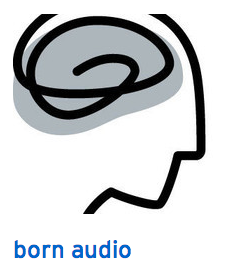[T.E.L.L. January Summary] Sound in Education
This post contributed by Leva Lee, BCcampus and Gina Bennett, College of the Rockies and members of SCETUG.
 John Born (BCIT), our January T.e.l.l. presenter, introduced us to the intriguing topic of “Sound in Education.” John framed the session by looking at three types of learning activities as discussed by William Horton in his book e-Learning by Design. We learned how sound can be used: 1. to Absorb – new knowledge; 2. to Do – Practice what we learned; and 3. to Connect what we learned to life & work.
John Born (BCIT), our January T.e.l.l. presenter, introduced us to the intriguing topic of “Sound in Education.” John framed the session by looking at three types of learning activities as discussed by William Horton in his book e-Learning by Design. We learned how sound can be used: 1. to Absorb – new knowledge; 2. to Do – Practice what we learned; and 3. to Connect what we learned to life & work.
John then provided some great examples of how sound can be used to enhance these types of learning activities. For example, we can use sound in education to facilitate the absorption of knowledge, through presentations, fieldtrips and readings. We heard about the importance of having an awareness of the soundscape of our environment, whether that environment is one which occurs naturally in a physical space or one we create in online spaces. Such soundscapes are important factors when designing a learning space – think, for example, of library and learning commons designs.
We also considered examples of how sound can be used to facilitate learning practice, whether that practice happens “in the field” or a car repair shop. Field practice, of course, can be recorded and reviewed. Sound can be played with as another way for learners to interact with the information they take in during practice sessions. Sound can also be used as a focus for observing a subject.
Students can also use sound to make connections between learning and life/work. For example, learners can conduct research on what they hear in recordings, and respond to questions. John introduced us to projects such as SoundCloud, a sort of a giant bazaar of sound files of all kinds. We saw how easy it was for both instructors and students to link to such sound files or embed them directly into course LMS pages or social media sites.
Finally, John showed us some of the tools available for working with sound, from freely-available apps like Audacity, to more proprietary but easy-to-use apps like GarageBand . He also talked briefly about pre- and post-production activities that further prepare sound for education applications.
We only touched the surface of this topic, but came away with a greater awareness of the ‘layers’ of sound in our lives, and the ways in which we define an educational environment or ambience using different kinds of sound. John’s passion for the topic and willingness to share and explore was evident. Thanks @bornaudio for sharing!


Leave a Reply
You must be logged in to post a comment.